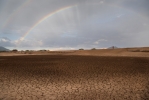Blog
TANZANIA MAASAIS ALSO TALK ABOUT THE CLIMATE CHANGE (07.12.2015)
The world is changing faster than we are expecting. I love travelling to locations that are different from what we are used to at home – climate, nature and people’s lifestyle wise. This time I spent November in Tanzania visiting many tribes that live there. Maasai tribe is the most numerous one. They are livestock farmers by their nature and basically eat everything that comes from cows, goats and sheep. They don’t cultivate land and they get all the necessary things for life from trading their livestock product for them.
It was not my first time in Tanzania. The last time I visited this exciting country, it was the drought season. This time, I chose to go there during the rainy season to see different nature. The change of drought and rain seasons is the only phenomenon that lets us know when the season changes in countries located under the equator. Heavy rains trigger powerful processes. The dry red soil that is covered with dried grass turns into green fields. The rains trigger the biggest animal migration in the world.
I thought that I would photograph a lion with a wet mane, pull the car out of mud and seek shelter from a heavy rain and wait for a perfect moment to get back without getting soaked – most of this never happened.
While living in a tent at the bottom of Longido mountain near the Maasai village, I got acquainted with a maasai who showed me his village, his family and what is most important – his lifestyle and way of thinking. It turned out that masaais also notice the big changes in the nature during the recent years. In recent years, the rainy season is late and it is shorter. There are areas that don’t see any rain. The rivers are dry and the water reservoir built by the village people is empty because the river does not bring any water there. Their livestock dies from starvation and thirst. Starvation and thirst also threaten the village people. It seems that the climate change is happening faster than expected.
What equipment did I use? When I took the photos presented here, I used Nikon D810 camera and AF-S Nikkor 24-70mm f/2.8 ED VR lens. Perfect kit. Camera’s 36.3 megapixel sensor needs a high quality lens. The sharpness of the subject is taken to a totally new level. If you are even a little bit mistaken, it is much more noticeable on a high resolution photo. That is why I needed the best. So far, I have used last generation’s Nikkor 24-70mm f/2.8 lens and been very satisfied with it. But during this trip, I started to understand the advantages of the new generation lens. The difference between them is bigger than I could have imagined. The image is sharper and it seems that the focusing moment is faster. It is also clear that only sharpness of the image does not make a good lens! The specialty of each optic device appears through many different small nuances and this lens does have this “pleasing nature”. The VR makes you brave enough to use lower ISO in dim lighting conditions or bring out the dynamics of movement and still have good sharpness in strategic areas. There is less chromatic aberration. Bokeh effect is more detailed than with previous model. Yes, this lens weighs 170 grams more and when travelling, each extra gram is important. But nevertheless, I would not change this new lens for the previous model, its construction is stronger. What is more, if you use heavier cameras like D4s or D810, it is better to use a bit heavier lens with it because then they are more balanced and stable.
Text and photos: Aivar Pihelgas



